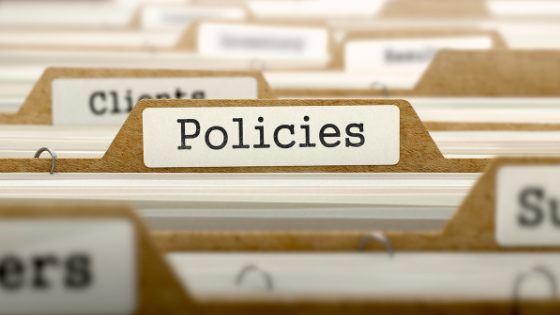Health and safety policies might not sound like the most interesting topics to many people. But without them, a company risks serious interruption of its operations, whether it’s due to illness, injury or accident. There are several components to crafting effective health and safety policies, and good reasons to make sure an organization gets it right.
What Do Health and Safety Policies Cover?
Just about every industry is subject to local, state, and/or federal workplace health and safety regulations. However, the depth and scope of the policies required can vary widely.
In general, these policies apply to workplace conditions that could cause harm to people, whether they’re employees or others on the premises (such as vendors, contractors, or the public). They may include certain required procedures in two areas:
- Prevention. Training and drills
- Reporting. Who notifies the fire department if the fire alarm goes off, for example
The responsibility for developing a company’s health and safety policies may involve multiple departments, such as facilities and human resources.
Employees may have to adhere to policies that mandate workplace attire, personal protective equipment or safety gear. For example, rings are prohibited in manufacturing settings to avoid employees’ hands getting caught in machinery, or all employees working in the warehouse must have bright yellow safety vests on.
These policies may also cover minimum and maximum standards for workplace conditions like lighting or noise. Health and safety policies can also cover things like what to do in the event of employee injury, fire, chemical spill or power outage.
The Process of Policy
Most workplace health and safety policies are established to meet a specific need. They can grow and change over time as a company’s needs grow and change, too. That’s why it’s important to regularly assess current policies and make revisions if needed.
Policies are generally crafted with stakeholder input, whether that’s administration, senior management, a board of directors, union representation or government regulators, for example. In some cases, a company’s legal counsel may also want to or need to approve a policy before it’s implemented.
Rolling out new policies requires education. All affected employees need to be aware of the new policy and what it requires of them (such as to whom they report chemical spills, or where the planned meeting place is if employees must evacuate the premises). Employee education or training may be needed. In some cases, planned and unplanned safety drills may be required (such as for a building evacuation in the event of a fire). In order to stay “ready”, companies often hold on-going education, training, and drills.
Policies also usually require documentation of their roll-out and implementation. Some policies call for record-keeping of training programs and who attended, as well as a checklist of employee competencies, like first aid or hazardous spill management.
The Benefits of Health and Safety Policies
- Avoid Fines. It’s important to have the appropriate health and safety policies in place to avoid fines or other penalties for violating applicable local, state or federal laws.
- Reduce Incidents. These policies can also help reduce harmful incidents, or when they do occur, minimize the damage to life and property. Having policies in place help maintain adequate levels of staff preparedness for unexpected occurrences.
- Increase Productivity. Good health and safety policies keep workplaces running well, with minimum interruption, because employees are less likely to experience job-related illness or injury that will keep them from coming to work, and because workflows are less likely to be adversely affected by incidents related to mechanical, chemical or other hazards.
- Reduce Liability. Workplace health and safety policies can also help reduce company liability for employee illness, injury or accident. For example, let’s say a company can prove that it made an effort to educate and train employees with regard to minimum safety standards (e.g., air quality), and employees did not use that knowledge or follow those training instructions to report substandard conditions; the fact that a company can prove it established and implemented policies for maintaining standards could influence the assessment of how responsible the company is when something bad happens.
One Final Word
Health and safety policies require investment in time and training. However, the benefits can far outweigh any drawbacks. The right policies can help keep companies running efficiently and with full staff while reducing liability and the chances of downtime because of workplace incidents related to accident, illness or injury.
Further reading: The Importance of Workplace Safety
